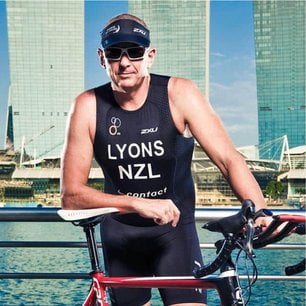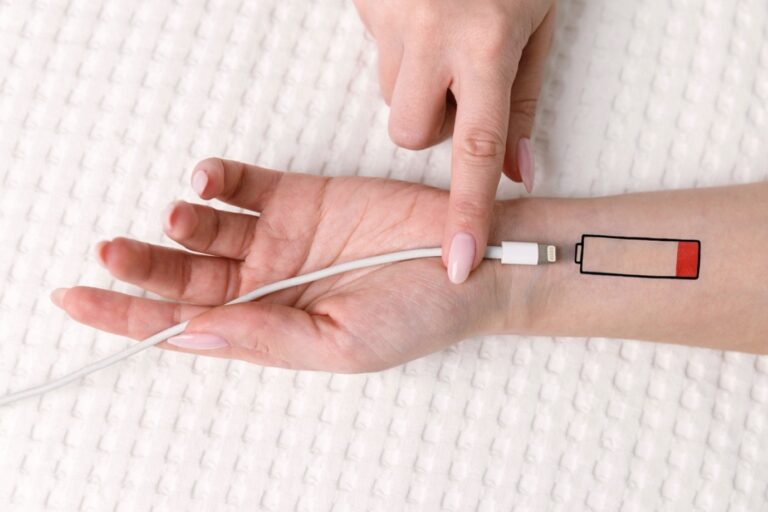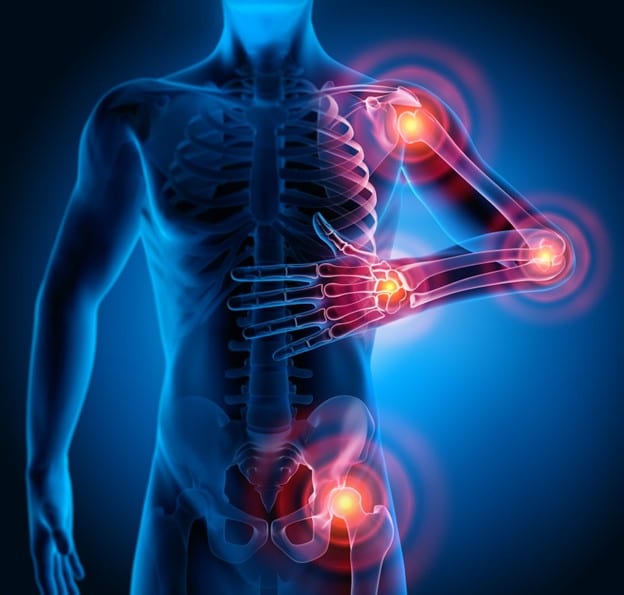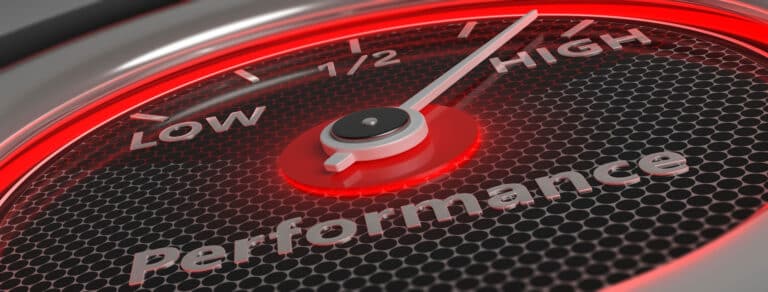
12 Best Recovery Methods for Athletes Who Want to Train Harder Without Burnout
Published:
Updated:
Up to 30 percent of sports injuries are linked to overtraining and inadequate recovery. That means nearly one in three setbacks athletes face could be avoided with better recovery practices.
No matter how hard you train, your body only gets stronger during recovery. It’s when your muscles repair, your energy systems refuel, and your nervous system recalibrates.
Yet most athletes still treat recovery as optional. They follow complex training programs, track every rep, but ignore what their bodies need most: a smart, science-backed recovery routine.
In this guide, you’ll learn 12 of the most effective muscle recovery methods. Each one is simple to implement and powerful enough to help you bounce back faster, reduce injury risk, and keep your training consistent.
1. Prioritize High-Quality Sleep
Why It Matters
Sleep is the foundation of recovery. While you rest, your body performs its deepest repair work: muscle growth, hormone regulation, tissue regeneration, and nervous system reset. Lack of sleep slows recovery, increases inflammation, and impairs performance. In fact, no other recovery method works optimally without consistent, quality sleep.
What Does the Research Say?
A meta-analysis in Sports Medicine shows that sleep extension significantly improves sprint time, shooting accuracy, and daytime alertness in athletes.
Practical Recommendations
- Get 7–9 hours of uninterrupted sleep each night.
- Use a wind-down routine—dim lights, no screens 1 hour before bed.
- Keep your room dark, cool, and quiet (60–67°F or 15–19°C).
- Limit alcohol, caffeine, and heavy meals within 2–3 hours of sleep.
- Consider short naps (20–30 minutes) for added recovery on heavy training days.
- If falling asleep is difficult, using recovery tools such as relaxation biomats can help ease the transition to sleep. Athletes who incorporate them into their pre-bed routine often report drifting off faster and experiencing deeper, more restful sleep.
2. Fuel Recovery With Optimal Nutrition
Why It Matters
Your body needs the right fuel to rebuild muscle fibers, reduce inflammation, and restore energy. Protein repairs tissue, carbohydrates replenish glycogen, and micronutrients support everything from joint health to immune function. Without strategic post-workout nutrition, recovery slows and performance declines.
What Does the Research Say?
A 2008 review in Nutrients confirms that combining carbohydrates and protein within 30–60 minutes post-exercise enhances both glycogen restoration and muscle protein synthesis.
Practical Recommendations
- Post-workout: Consume a 3:1 carb-to-protein ratio (e.g., a banana + whey shake).
- Daily protein target: 1.6–2.2 g/kg of body weight per day.
- Include anti-inflammatory foods like salmon, spinach, cherries, and turmeric.
- Avoid excessive alcohol and processed foods—they impair muscle recovery.
- Spread meals across the day to support ongoing tissue repair.
3. Stay on Top of Hydration
Why It Matters
Dehydration impairs muscle function, slows down the delivery of nutrients, and delays recovery. Even a 2% fluid loss can negatively affect endurance and strength. Athletes lose electrolytes through sweat, so it’s not just about drinking water—it’s about replacing sodium, potassium, and magnesium too.
What Does the Research Say?
A study in the Journal of the Athletic Training shows that post-exercise rehydration with electrolyte-enriched fluids improves fluid retention and accelerates recovery compared to plain water.
Another review in Frontiers in Nutrition connects proper hydration with reduced muscle damage and enhanced thermoregulation
Practical Recommendations
- Drink 0.5–1L of fluid per hour of exercise.
- Use electrolyte-enhanced drinks (especially in hot, humid conditions).
- Monitor hydration via urine color—light yellow is ideal.
- Include sodium in recovery meals/snacks if training is long or intense.
- Don’t wait until you’re thirsty—hydrate proactively, not reactively.
4. Use Compression Therapy to Accelerate Recovery
Why It Matters
Compression therapy isn’t just for injury recovery, it’s a science-backed method to support circulation, reduce swelling, and speed up muscle repair after workouts. Whether you’re training for endurance, strength, or team sports, post-exercise compression can ease muscle soreness and get you back to peak performance faster.
Athletes use compression garments or pneumatic compression boots to improve blood flow, flush out waste products like lactic acid, and reduce inflammation in targeted areas like the legs, hips, or arms.
What Does the Research Say?
Numerous studies have explored the physiological and performance benefits of compression therapy. A meta-analysis published in the British Journal of Sports Medicine concluded that compression garments significantly reduce delayed onset muscle soreness (DOMS), improve muscle strength recovery, and lower creatine kinase levels post-exercise (Born et al., 2013).
Another 2024 study in the International Journal of Sports Physiology and Performance evaluated the effects of intermittent pneumatic compression (IPC) boots and found that athletes who used IPC post-exercise reported improved muscle function and reduced fatigue 24 hours later.
This research aligns with what competitive cyclist Alan Grant discovered:
“I’ve always been a bit skeptical about recovery products, having never really felt any tangible benefits from wearing compression tights or socks. But after one trial, I was an instant convert. After just 30 minutes in the compression equipment following a hard, four-hour training ride, my legs felt less fatigued immediately. More importantly, when I climbed on the bike the next morning, my legs felt much fresher than they normally would 24 hours after a punishing workout.”
Practical Recommendations
- Use compression boots (e.g., Recovery Systems’ Black Max Pro | Leg Compression Boots).
- Apply compression within 1–2 hours after your workout for best results.
- Choose compression gear with graduated pressure—tighter at the extremities, looser near the torso.
- Combine with other recovery strategies like hydration and light movement for enhanced effects.
- Use daily or as needed, especially during competition weeks or after heavy training blocks.
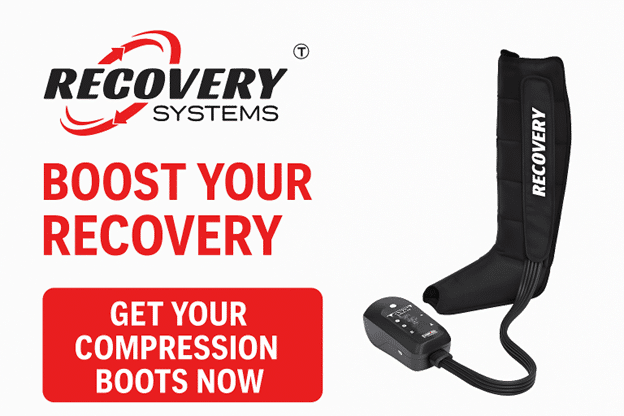
5. Incorporate Active Recovery Into Your Routine
Why It Matters
Active recovery is low-intensity movement performed after intense training. Unlike complete rest, it keeps your blood flowing, helps remove waste products like lactate, and reduces muscle stiffness. It’s especially effective the day after high-intensity workouts or competitions to reduce soreness and promote faster recovery without placing additional strain on the body.
Activities like walking, cycling at low resistance, swimming, or mobility flows can all qualify as active recovery. The key is staying in motion without stressing the muscles further.
What Does the Research Say?
According to a study, athletes who performed a swim-based active recovery session after intense running had improved time-to-fatigue scores compared to passive recovery, suggesting faster neuromuscular recovery.
Another study from the Journal of Strength and Conditioning Research showed that active recovery at intensities close to an athlete’s lactate threshold significantly accelerated the clearance of blood lactate compared to passive rest.
This method also helps downregulate the nervous system and supports circulation in the hours after intense physical stress.
Practical Recommendations
- Perform 15–30 minutes of low-impact activity (e.g., brisk walking, easy cycling, swimming) 6–24 hours post-workout.
- Keep your heart rate below 60% of your max. The goal is movement, not effort.
- Pair with mobility drills or dynamic stretching to enhance joint function.
- Use active recovery the day after strength or sprint sessions to reduce soreness.
- Monitor how your body responds—if fatigue increases, shift to passive recovery.
6. Integrate PEMF Therapy for Enhanced Cellular Recovery
Why It Matters
Pulsed Electromagnetic Field (PEMF) therapy uses electromagnetic fields to stimulate cellular repair and reduce inflammation at the tissue level. This technology has gained significant traction among elite athletes for its ability to accelerate healing, improve sleep quality, and enhance overall recovery without the time commitment of traditional therapies.
What Does the Research Say?
PEMF therapy works by delivering precise electromagnetic frequencies that help restore normal cellular function and promote tissue repair. The technology has been particularly effective for managing overuse injuries and chronic inflammation.
The Recovery Systems PEMF BioMat uses clinically-tested frequencies designed specifically for athletic recovery. Unlike consumer-grade devices, these mats deliver therapeutic-level electromagnetic fields with precise frequency control.
Athletes using Recovery Systems’ BioMat report significant benefits in their recovery processes. As Dolly Huang shares after using the biomat: “Bought the biomat and tried for a month now. It has helped me recover better (especially on getting more quality sleep) and less sore post workout.” This real-world feedback supports the research showing PEMF’s effectiveness in accelerating cellular repair and reducing inflammation.
Practical Recommendations
- Use PEMF therapy for 20-30 minutes within 2 hours post-training.
- Position the mat to target primary muscle groups used in your sport.
- Set frequency to 10Hz for standard muscle recovery mode.
- Combine with meditation or stretching for enhanced relaxation benefits.
- For best results, use consistently rather than sporadically.
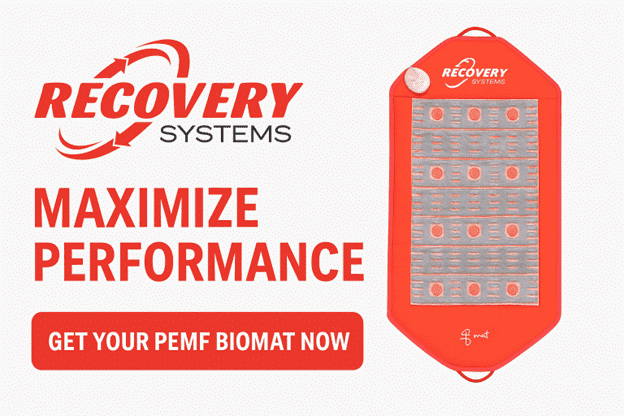
7. Use Foam Rolling and Self-Myofascial Release (SMR)
Why It Matters
Foam rolling and other forms of self-myofascial release (SMR) are powerful tools for easing tight muscles, breaking up adhesions in connective tissue, and restoring mobility. By targeting the fascia—the web of connective tissue that surrounds muscles—you reduce stiffness, improve flexibility, and support blood flow to aid recovery. SMR is especially helpful after high-volume resistance training or long runs when muscles feel knotted or restricted.
What Does the Research Say?
According to a study in Journal of Sport Science and Nutrition, rugby players found that foam rolling across several muscle groups decreased pain scores and increased power output (vertical jump height) at 24, 48, and 72 hours post-exercise compared to a control group.
A 2015 meta-analysis in International Journal of Sports Physical Therapy also confirmed that SMR improves range of motion without negatively affecting muscle performance, making it ideal for both pre- and post-exercise use.
Foam rolling appears to increase arterial blood flow and reduce the perception of soreness, with some studies even noting a positive effect on muscle activation and readiness.
Practical Recommendations
- Use a foam roller or massage ball for 10–15 minutes after your workout, especially on sore areas.
- Roll slowly over major muscle groups—quads, hamstrings, glutes, calves, upper back.
- When you hit a tender spot, pause and hold for 20–30 seconds to release tension.
- Pair with static stretching post-rolling to maintain flexibility gains.
- Don’t overdo it—avoid bruising or extreme pain, especially on inflamed tissues.
8. Try Contrast Water Therapy (Hot-Cold Immersion)
Why It Matters
Contrast water therapy (CWT) involves alternating between hot and cold water immersion to stimulate blood flow, reduce muscle soreness, and promote lymphatic drainage. The rapid temperature changes cause blood vessels to constrict and dilate, creating a “pumping” effect that flushes out waste products and draws in oxygen- and nutrient-rich blood—an ideal combo for faster recovery.
CWT is especially useful after competitions, long training days, or when soreness lingers beyond 24 hours.
What Does the Research Say?
A meta-analysis published in the Journal of Strength and Conditioning Research found that contrast water therapy significantly reduces muscle soreness after both resistance and endurance training.
A systematic review and meta-analysis evaluated CWT across 18 controlled trials. It demonstrated that, compared to passive recovery, CWT significantly reduced muscle soreness (DOMS) at follow-up time points: < 6, 24, 48, 72, and 96 hours. Also minimized loss of muscle strength over the same time span.
CWT has also been shown to enhance parasympathetic nervous system recovery, which supports better sleep and hormonal regulation post-training.
Practical Recommendations
- Use 1-minute hot (38–40°C) followed by 1-minute cold (10–15°C) for a total of 10–15 minutes.
- Alternate between hot and cold for 3–5 cycles, always ending with cold.
- Perform CWT within 2 hours post-exercise for best effects.
- If no tub is available, use contrast showers by alternating hot and cold water.
- Avoid if you have cardiovascular conditions—check with a doctor first.
9. Use Massage Therapy to Promote Circulation and Relaxation
Why It Matters
Massage therapy is more than just a luxury—it’s a targeted recovery method that improves circulation, reduces muscle tightness, and promotes relaxation. It also helps calm the nervous system, ease stress, and reduce the perception of pain after intense training. For athletes dealing with chronic tension, delayed soreness, or cumulative fatigue, massage can serve as both a physical and psychological recovery boost.
What Does the Research Say?
According to a systematic review in the International Journal of Sports Physical Therapy, massage therapy post-exercise was effective in reducing DOMS and improving perceptions of recovery and fatigue.
Further, a study in the Journal of Athletic Training found that massage 2 hours after exercise reduced muscle soreness and enhanced performance 48 hours later, likely due to better blood flow and decreased inflammation.
While the physiological effects on performance are still debated, the psychological benefits—such as reduced anxiety, stress relief, and improved mood—are consistently supported in the literature.
Practical Recommendations
- Schedule a sports massage once per week during high training phases or competition seasons.
- Use self-massage tools (like massage guns or therapy balls) for quick post-workout sessions.
- Focus on tight or overused muscle groups like calves, hamstrings, quads, and shoulders.
- For general maintenance, opt for 30–60 minute sessions.
- Avoid deep tissue massage immediately before competition—it may cause temporary soreness.
10. Practice Meditation and Mindfulness for Mental Recovery
Why It Matters
Recovery isn’t just physical—it’s mental. High-performance training taxes the nervous system, elevates stress hormones, and drains cognitive focus. Left unchecked, this stress can disrupt sleep, elevate inflammation, and increase risk of overtraining. Integrating meditation or mindfulness into your recovery routine helps reset your nervous system, improve emotional regulation, and even enhance pain tolerance.
Mindfulness also builds mental resilience, which is crucial for consistency and performance under pressure.
What Does the Research Say?
A 2020 study published in Frontiers in Psychology found that, an 8-week MBSR course improved psychological well-being, sleep quality (both subjective and objective), athletic coping skills, and performance in collegiate rowers (Frontiers in Psychology, 2020).
In another trial, collegiate athletes who practiced mindfulness showed lower levels of cortisol (a key stress hormone), better recovery scores, and more consistent athletic performance (De Petrillo et al., 2009).
These findings suggest that psychological recovery techniques like meditation are not optional—they’re essential for long-term athletic health and consistency.
Practical Recommendations
- Start with 5–10 minutes of guided meditation using apps like Headspace, Insight Timer, or Calm.
- Try box breathing (4-4-4-4) or body scan meditations post-workout to trigger parasympathetic activation.
- Integrate mindfulness into cooldowns by focusing on breath and body sensations during stretching.
- Use meditation as a daily routine, especially during intense training blocks or pre-competition phases.
- Consider pairing mindfulness with journaling to reflect on stress triggers and recovery responses.
11. Add Stretching and Mobility Work to Improve Tissue Recovery
Why It Matters
Stretching and mobility work reduce muscle stiffness, improve joint range of motion, and promote circulation—all of which support recovery between workouts. When done regularly, it also helps prevent movement restrictions that can lead to compensations and injury. Stretching is especially valuable after strength training, long runs, or sedentary periods.
Mobility drills, on the other hand, focus on dynamic joint movement and tissue quality—essential for performance and injury prevention.
What Does the Research Say?
A study found that post-exercise stretching can reduce the intensity and duration of delayed onset muscle soreness, particularly when combined with other recovery modalities.
Another study found that dynamic mobility drills improved flexibility and neuromuscular control, which may reduce the physical toll of repetitive training ( Turki et al. 2011).
Practical Recommendations
- Stretch major muscle groups (hamstrings, hip flexors, quads, calves, lats) for 20–30 seconds per stretch after workouts.
- Use dynamic mobility drills (leg swings, thoracic openers, deep squats) during warmups or active recovery.
- Focus on quality of movement, not just holding positions.
- Use stretching as part of your cool-down ritual to relax the body and nervous system.
- If sore, avoid aggressive static stretching—opt for gentle range-of-motion work instead.
12. Take Rest Days and Deload Weeks Seriously
Why It Matters
Progress doesn’t come from training alone—it comes from adapting to that training. If you never allow your body time to recover, you stay in a state of constant breakdown. Regular rest days and deload weeks are critical to rebuilding tissue, balancing hormones, preventing mental burnout, and avoiding overtraining syndrome. Skipping rest may feel productive, but in reality, it stalls progress.
What Does the Research Say?
According to a review published in Sports Health, overtraining can result in elevated cortisol levels, chronic fatigue, decreased performance, and increased injury risk (Kreher & Schwartz, 2012).
Another 2020 study in Frontiers in Physiology showed that planned deloading (reducing volume and/or intensity) improves muscle recovery markers and neuromuscular function without compromising long-term strength gains.
The importance of consistent recovery becomes clear when looking at endurance athletes who maintain high training volumes. Australia II Team Member Alan Bradley explains: “Being able to back up my training day after day was critical – I give much of the credit to Recovery Systems after each and every session. Using this regime meant that fatigue was never an issue. My legs felt so good that I backed up with a training ride the morning after a major race finished!”
Practical Recommendations
- Schedule 1–2 full rest days per week (especially after intense or long sessions).
- Every 4–6 weeks, reduce training load by 40–60% for 1 deload week.
- Use recovery days for walking, stretching, light mobility, or meditation—not heavy cardio.
- Track fatigue, sleep, and mood to identify when you need additional rest.
- Remember: Consistent rest improves strength, speed, and endurance over time.
Recovery Strategies by Sport Type
Different sports place unique demands on the body, requiring tailored approaches to optimize recovery between sessions and competitions.
- Endurance Athletes
Endurance athletes face unique challenges with metabolic waste accumulation and glycogen depletion across long training blocks. The key is implementing recovery strategies that support high training volumes without compromising performance.
Your Recovery Kit
- During long sessions: Compression breaks every 90 minutes using portable systems
- Post-training: Extended 25-30 minute compression with graduated pressure
- Recovery days: Full-body PEMF therapy combined with active recovery movement
Professional triathlete Kath Haesner found this approach transformative: “As a professional Triathlete, my legs take a hammering. Incorporating Recovery Systems into my training routine really combats muscle fatigue. My legs have never felt fresher!”
- Team Sport Athletes:
Team sports require different recovery approaches based on competitive schedule and contact demands. The focus shifts from pure volume management to rapid recovery between high-intensity efforts.
Professional Rugby Union player Lima Sopoaga emphasizes how small improvements compound: “Every player at the highest level of professional sports is always looking for an edge or for a 1% gain. It’s the accumulation of all those 1 percenters that might get you over the line each week. Recovery Systems fits that perfectly.”
- Individual Sport Athletes
For individual sport athletes, consistency is everything. Training disruptions from minor injuries can derail months of preparation. The focus becomes injury prevention and maintaining training quality over time.
Conclusion
Recovery isn’t time off, it’s what makes training effective. Science backed methods like sleep, nutrition, hydration, and mobility reduce injury risk, repair muscles, and sharpen performance. Start with one or two strategies, stay consistent, and remember: prioritizing recovery is how progress happens.
People Also Ask
How Can I Recover My Muscle Mass Fast After High-Intensity Workouts?
To recover muscle mass fast, focus on refueling with high-quality post-workout nutrition, including protein and complex carbs, within 30–60 minutes of training. Stay hydrated with water and electrolytes, and prioritize sleep to support tissue repair. Techniques like stretching, mobility work, and consistent compression therapy improve blood flow, reduce inflammation, and accelerate muscle recovery after intense exercise.
What Do Athletes Use To Heal Faster After Intense Training?
Professional and amateur athletes often use a mix of compression, nutrition, sleep, and mobility-focused routines to recover faster. The best recovery methods for athletes include nutrient-dense meals, hydration, and the strategic use of sports recovery tools that reduce soreness and promote circulation. By integrating these consistently, athletes enhance performance and reduce downtime after high-intensity training.
What Is The Best Muscle Recovery Routine To Follow Daily?
The best muscle recovery routine includes balanced nutrition, 7–9 hours of quality sleep, active recovery (like walking or yoga), and regular hydration. Add compression therapy 3–5 times weekly to promote faster muscle healing and reduce soreness. Don’t forget to include time for breathwork or mindfulness to lower stress levels and support full-body recovery.
What Is The Best Product For Muscle Recovery?
The best product for muscle recovery is the Black Max Quatro Compression Boots by Recovery Systems. These medical-grade boots use overlapping chambers and four therapy modes to boost blood circulation, reduce swelling, and flush out metabolic waste. Whether you’re recovering from a tough workout or managing muscle soreness, this system delivers results trusted by athletes and physiotherapists.
What Is The Best Recovery Method For Athletes?
The best recovery method for athletes is a combination of nutrition, compression therapy, hydration, and sleep. Tools like Recovery Systems Compression Boots increase blood flow and enhance recovery between training sessions. Athletes also rely on structured routines, mobility drills, and post-workout meals to support muscle function and improve long-term performance.
What Is The Recovery Schedule For Athletes After Training?
A proper recovery schedule for athletes includes at least one complete rest day per week, 1–2 active recovery days, and daily hydration and sleep tracking. After high-intensity workouts, use compression, gentle stretching, and anti-inflammatory foods to speed up healing. Align recovery intensity with training intensity levels to prevent overtraining and promote long-term gains.
What Recovers Muscles The Fastest?
The fastest muscle recovery happens when you combine post-workout nutrition, hydration, quality sleep, and compression. Recovery Systems’ compression therapy is especially effective at improving blood flow and flushing toxins from sore tissues. Pair that with lean proteins, anti-inflammatory foods, and active rest to bounce back faster from high-stress workouts.
Which Is Best For Muscle Recovery—Rest, Nutrition, Or Compression?
All three are essential and work best together. Rest repairs your nervous system, nutrition rebuilds damaged tissue, and compression therapy—like Recovery Systems’ boots—speeds up blood flow and reduces inflammation. For the best muscle recovery, create a balanced recovery routine that includes all three consistently to maximize performance and prevent injuries.
Author:
Michael Lyons is a biohacking and recovery specialist with three decades of tech and Meditech experience and 10,000+ hours in endurance sports coaching.

